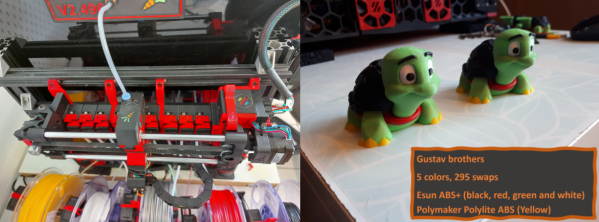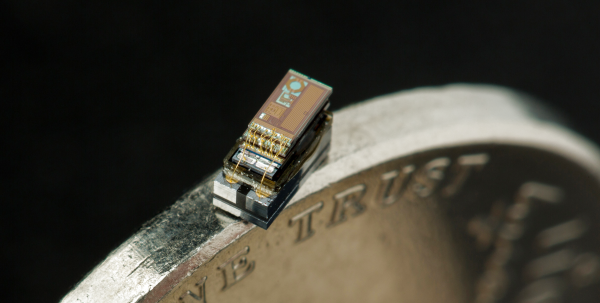What’s better than an Atari Punk Console synthesizer? How about four Atari Punk Console synthesizers. And what better way to present them but as brass wire art sculptures. We’d have forgiven [iSax] if he’d stopped at four brass wire synths, but he took things to another level with his kinetic sculpture that does double duty as a mechanical sequencer. Called the Cyclotone – The Mechanical Punk Console Sequencer, it features wood, brass, brushes, and 555 timers. You can see the demonstration in the video below the break.
If you’re not familiar with the Atari Punk Console, it’s a circuit first described as a “Sound Synthesizer” in Forest Mims’ “Engineer’s Notebook: Integrated Circuit Applications” first published in 1980. It utilized two 555 timers in a single chip, the 556. Later dubbed the “Atari Punk Console”, the circuit has stood the test of time and is still quite popular among hackers of all sorts.
[iSax]’s build adds a sequencing element that allows the synths to be played automatically. The synthesizers are skewered 90 degrees from each other on a square dowel, which is turned at a variable RPM by a stepper motor controlled by a knob at the base of the sculpture.
On either side of each synth is a commutator that contacts salvaged rotary tool brushes which provide power through the hexagonal brass supports. Each synth retains its own speaker and controls and has its own segmented numeral displayed with discrete LED’s that light up when each synth is played.
We applaud [iSax] for a well executed and imaginative build that successfully meshes circuit scultpure, kinetic sculpture, classic electronics and even blinkenlights. If you enjoyed this build, you should also go have a look at a free form Atari Punk Console build and another one built into a joystick. If you come across a project of any kind that catches your fancy, be sure you let us know about it via the Tip Line!
Continue reading “Kinetic Synth-Kebab Sculpture Plays Punk Sequentially”


















